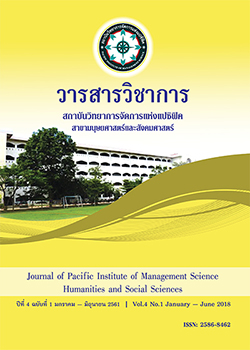Holacracy “Holacracy”- new flexible management system for 2020?
Keywords:
Holacracy Management, Holacracy TheoryAbstract
The dynamic of business environment leads to the organization management, the old paradigm of hierarchy management has been evolved to be more dynamic and more elastic to compete with fierce competition with speed to market. Holacracy theory has been developed to cope with the new dynamic environment. This article is aimed to review and understand the meaning of Holacracy management, the heart of Holacracy management, how does it work and the key element of Holacracy management based on literature review
References
Covin, J. G. and Slevin, D. P. (1989). Strategic Management of Small Firms in Hostile and Benign Environments. Strategic Management Journal, 10(1), pp. 75-87
D.D. Warrick, John F. Milliman, Jeffery M. Fergus on Building high performance cultures Organizational Dynamics (2016) 45, 64-70 Available online at www.sciencedirect.com
Drucker, P. F. (1988), the coming of the new organization. Harvard Business Review on Knowledge Management. Boston
Gerardo David Abreu Pederzini, (2016) ”Strategic management cultures: historical connections with science„, Journal of Management History, Vol. 22 Issue: 2,pp. 214-235, doi: 10.1108/JMH-12-2015-0212
Ho Wook Shin, Joseph C. Picken, Gregory G. Dess, 2017 Revisiting the learning organization: How to create it, Organizational Dynamics (2017) 46, 46-56
Kelemen J. et al. (2010). Knowledge in Context. Iura Edition. SR. 2010. pg. 139-172
Lumpkin, G.T. and Dess, G.G. (2001). Linking Two Dimensions of Entrepreneurial Orientation to Firm Performance: The Moderating Role of Environment and Industry Life Cycle. Journal of Business Venturing, 16, 429-45
Lumpkin, G.T., Dess, G.G. (1996). Clarifying the Entrepreneurial Orientation Construct and Linking It to Performance, Academy of Management Review, 21(1): 135–172.
Ludmila Mládková, (2015), 3rd International Conference on Leadership, Technology and Innovation Management, Knowledge Workers and the Principle of 3S (Self-management, Self-organization, Self-control),University of Economics, Prague, W. Churchilla 4, Prague 3, 130 00, Czech Republic Procedia - Social and Behavioral Sciences 181 ( 2015 ) 178 – 184
Mládková, L. (2012), Management of Knowledge Workers. IURA Edition. Bratislava SR. ISBN 978-80-8078-463-8.
Newell, D. (2000), How to retain technical Professional. People Management. 8 June 2000.
Reboul, C. et al. (2006), Managing Knowledge Workers: The KWP Matrix. Conference Proceedings MOMAN 06, Prague 2.2.2006. ISBN 80-86596-74-5.
Shahram Mirzaei Daryania,*, Amir Aminib (2016), Management and Organizational Complexity, 3rdInternational Conference on New Challenges in Management and Organization: Organization and Leadership, 2 May 2016, Dubai, UAE Procedia - Social and Behavioral Sciences 230 (2016) 359 – 366.
Suff, P., Reilly, P. (2005). In the Know: Reward and Performance Management of Knowledge Workers. Institute of Employment Studies. 2005.
Wright, P. M. and McMahan, G. C. (1992). Theoretical perspectives for strategic human resource management. Journal of management, 18(2), 295- 320.
Venkatraman, N. (1989). Strategic Orientation of Business Enterprises: The Construct, Dimensionality, and Measurement, Management Science, 35(8): 942-962.
Downloads
Published
Issue
Section
License
บทความที่ได้รับการตีพิมพ์เป็นลิขสิทธิ์ของ สถาบันวิทยาการจัดการแห่งแปซิฟิค
ข้อความที่ปรากฏในบทความแต่ละเรื่องในวารสารวิชาการเล่มนี้เป็นความคิดเห็นส่วนตัวของผู้เขียนแต่ละท่านไม่เกี่ยวข้องกับสถาบันวิทยาการจัดการแห่งแปซิฟิค และคณาจารย์ท่านอื่นๆในสถาบันฯ แต่อย่างใด ความรับผิดชอบองค์ประกอบทั้งหมดของบทความแต่ละเรื่องเป็นของผู้เขียนแต่ละท่าน หากมีความผิดพลาดใดๆ ผู้เขียนแต่ละท่านจะรับผิดชอบบทความของตนเองแต่ผู้เดียว







